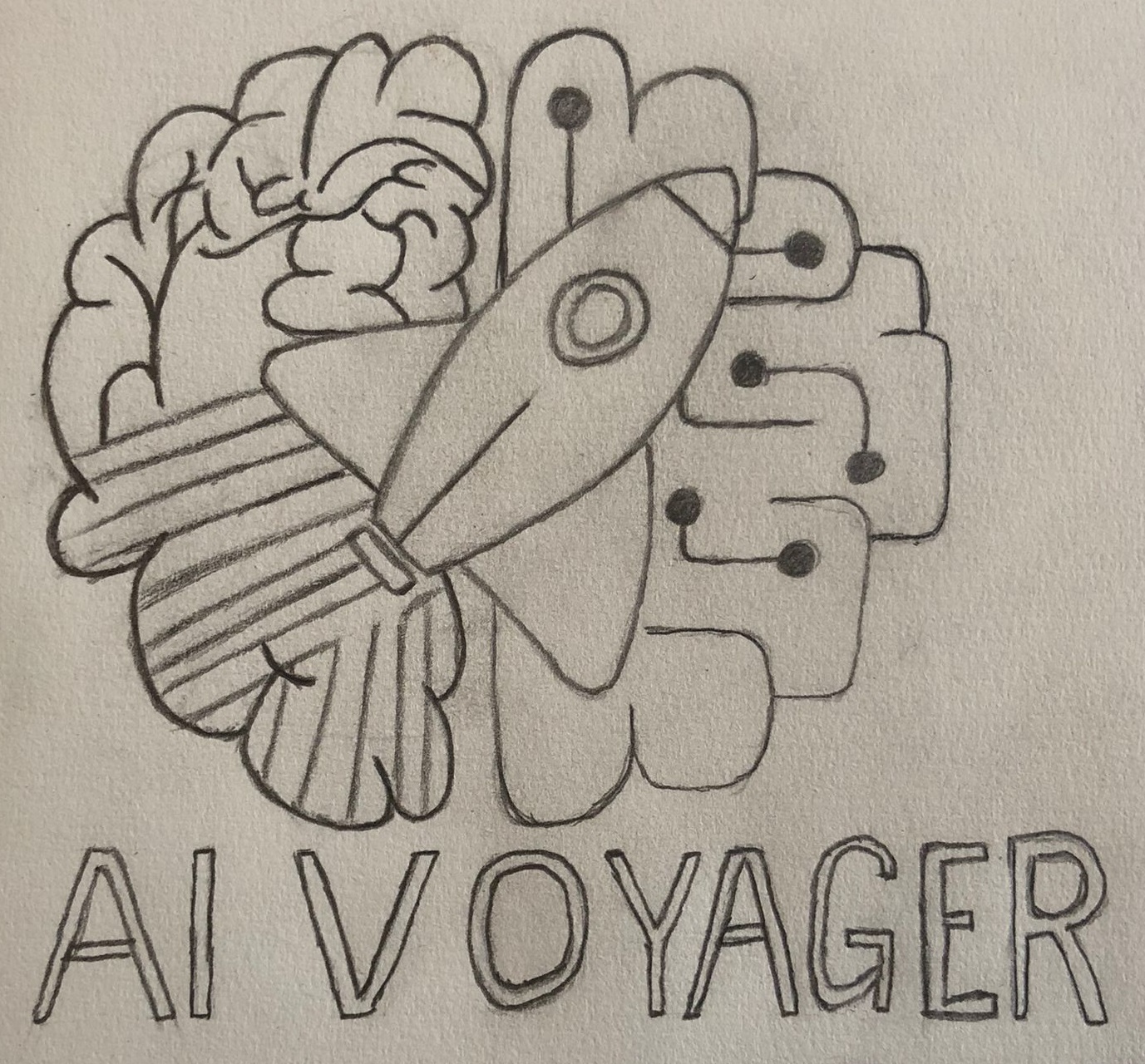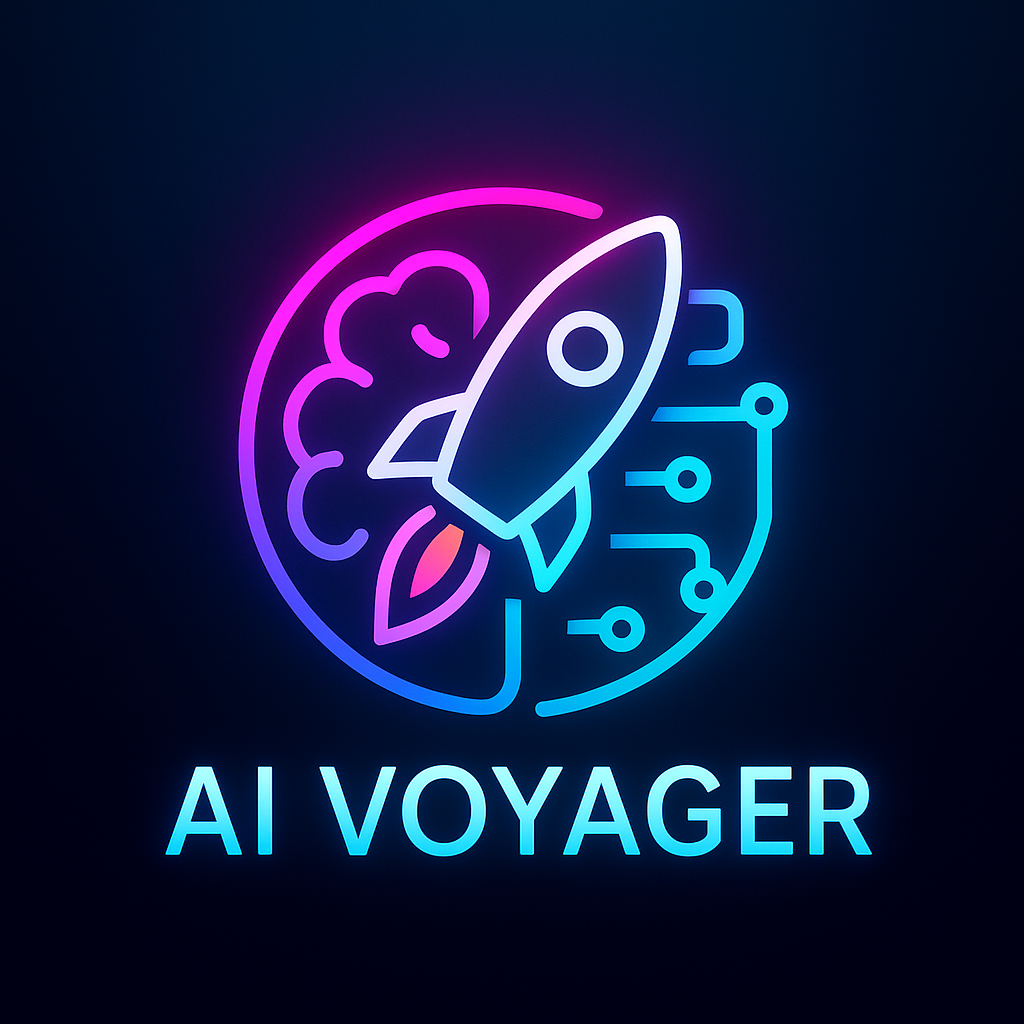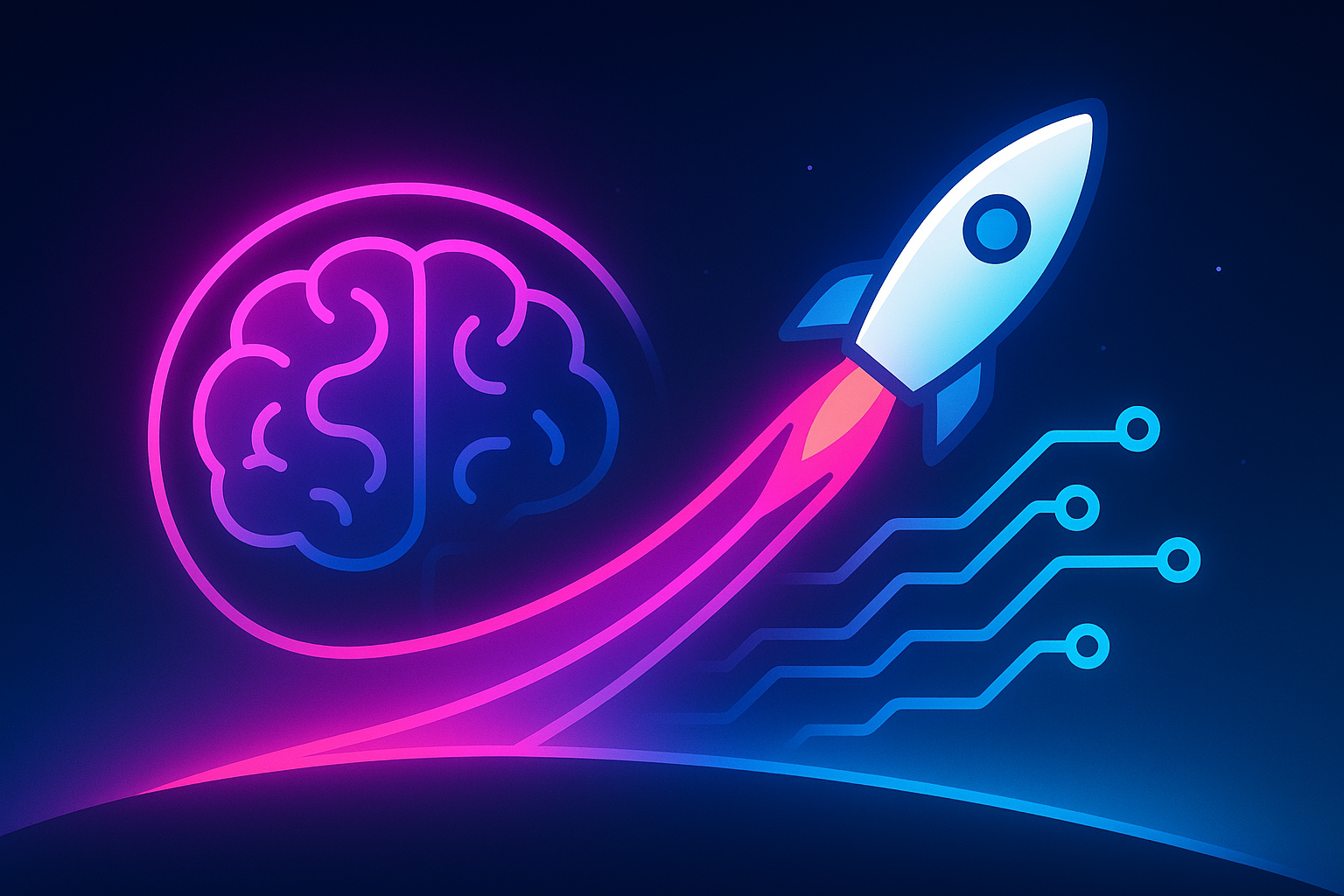Crafting the AI Voyager Identity
From Sketch to Digital Reality
Published on May 12, 2025
Strap in and fire up the neural engines—AI Voyager is lifting off!
This journey through the cosmos of artificial intelligence has been nothing short of a thrill ride, packed with discovery, creativity, and the occasional existential musing. One of the most exciting pit stops? Crafting a visual identity that doesn’t just say “AI,” but screams “interstellar innovation.” In this post, I’ll take you behind the scenes of how a humble sketch evolved into the sleek digital logo and cover art that now boldly go where no brand has gone before.
Step 1: The Neon Brainstorm
Every great journey starts with a spark—and in my case, it was a literal neon glow. With nothing more than a vague idea and a caffeine-fueled curiosity, I turned to ChatGPT and asked it to conjure up a “simplistic modern logo with a neon aesthetic.” The result? A glowing brain that looks like it moonlights as a synthwave DJ.
This first concept featured a stylized brain outlined in white neon, floating heroically against a moody gradient backdrop. A semi-circle ring wrapped around it, shifting from pink to purple to blue—like a cosmic aura or a very stylish Saturn.

It wasn’t perfect, but it had vibes. And that was enough to launch the next phase of the mission.
Step 2: Back to the Drawing Board—Literally
While the neon brain had its charm, I wanted something more me. So I ditched the pixels for pencils and went full analog—hello, sketchpad, my old friend.
Armed with a mechanical pencil and a head full of ideas, I sketched out the core elements that would define
AI Voyager’s identity:
- A stylized human brain on the left, symbolizing intelligence and creativity
- A sleek rocket at the center, because what’s a voyage without a ship?
- And circuit patterns extending to the right, representing the digital frontier we’re exploring
This rough sketch became the blueprint for everything that followed. It wasn’t polished, but it had soul—and a surprisingly decent sense of symmetry.

Next up: turning this analog ambition into digital reality. Ready for step 3?
Step 3: From Pencil to Pixel (with a Side of Clip Art)
With my trusty sketch uploaded, I handed the reins to ChatGPT and prompted:
"Create image—I have sketched this logo, could you create a digital logo from my sketch?"
The result? A digital draft that was definitely on the right trajectory—rocket, brain, circuits, the whole crew was present. The rocket stood proudly in the center, splitting the design like a sci-fi yin-yang. On the left: a bold red stylized brain. On the right: cool blue circuitry patterns. And anchoring it all, the title “AI VOYAGER” in bold, all-caps glory.
Was it perfect? Not quite. It had a bit of that clip art conference badge vibe. But it was a solid first orbit—proof that the concept could fly. Next stop: refining the design into something sleeker, smarter, and more me.
Step 4: Neon Revival
Even though I was exploring new directions, I couldn’t shake my love for that original neon vibe. So I decided to merge the best of both worlds—my sketched concept and the glowing aesthetic that first sparked this journey.
I uploaded the sketch-based digital logo and prompted:
"Can you update the image to match the color style of the attached image?"
The result? A digital draft that was definitely on the right trajectory—rocket, brain, circuits, the whole crew was present. The rocket stood proudly in the center, splitting the design like a sci-fi yin-yang. On the left: a bold red stylized brain. On the right: cool blue circuitry patterns. And anchoring it all, the title “AI VOYAGER” in bold, all-caps glory.

It was bold. It was bright. It was so on-brand. I was nearly ready to call it final—just one last tweak to make it perfect.
Step 5: The Final Frontier—Transparency
With the neon aesthetic locked in and the design glowing like a synthwave dream, there was just one last mission objective: ditch the background.
To make the logo versatile—whether for websites, merch, or intergalactic presentations—I needed it in a transparent format. So I gave ChatGPT one final prompt:
"Can you make it a transparent PNG file?"
And just like that, the background vanished, leaving behind a crisp, glowing emblem ready to float seamlessly over any surface.

It wasn’t just a banner—it was a statement. AI Voyager had officially arrived on the social scene.
Step 6: Going Galactic with Cover Art
With the logo locked in and glowing like a neon beacon, I realized something was missing—a cover image. After all, what’s a brand without a banner to fly?
So I turned once again to ChatGPT and prompted:
"Can you create a cover image for social media that matches this design?"
The result was a stunning visual extension of the logo’s universe. On the left, a glowing pink-and-purple brain pulsed with thought. On the right, a sleek white rocket launched into the digital cosmos, trailing neon flames. Beneath it, blue circuitry stretched outward like a futuristic launchpad. The whole scene was set against a deep-space gradient, giving it that perfect sci-fi-meets-synthwave vibe.

Mission accomplished. From a vague idea to a hand-drawn sketch, through digital drafts and neon dreams, the AI Voyager logo was finally ready for launch.
Conclusion: From Scribbles to Stardust
What started as a vague idea and a glowing brain has evolved into a full-fledged visual identity—logo, cover art, and all. Along the way, I sketched, prompted, tweaked, and glowed-up my way through a creative process that was equal parts analog nostalgia and digital wizardry.
The final result? A brand that feels uniquely AI Voyager—bold, bright, and ready to explore the frontiers of artificial intelligence with style.
Whether you're launching your own project or just love a good design transformation, I hope this behind-the-scenes look sparks a little inspiration. And remember: sometimes the best way to move forward is to go back to the sketchpad.
Next Week on AI Voyager
Next week, I’ll take you on my first step toward becoming an AI Engineer with Azure—sharing how I explored Microsoft’s AI tools, built my first smart project, and earned my first badge. If you’re curious about how to start your own AI journey, don’t miss it!
Read the next post: 🧠 From LEGO Bricks to Robot Brains: My First Step Toward Becoming an AI Engineer with Azure
Until then, stay curious—and keep exploring.
– André Barnard, AI Explorer